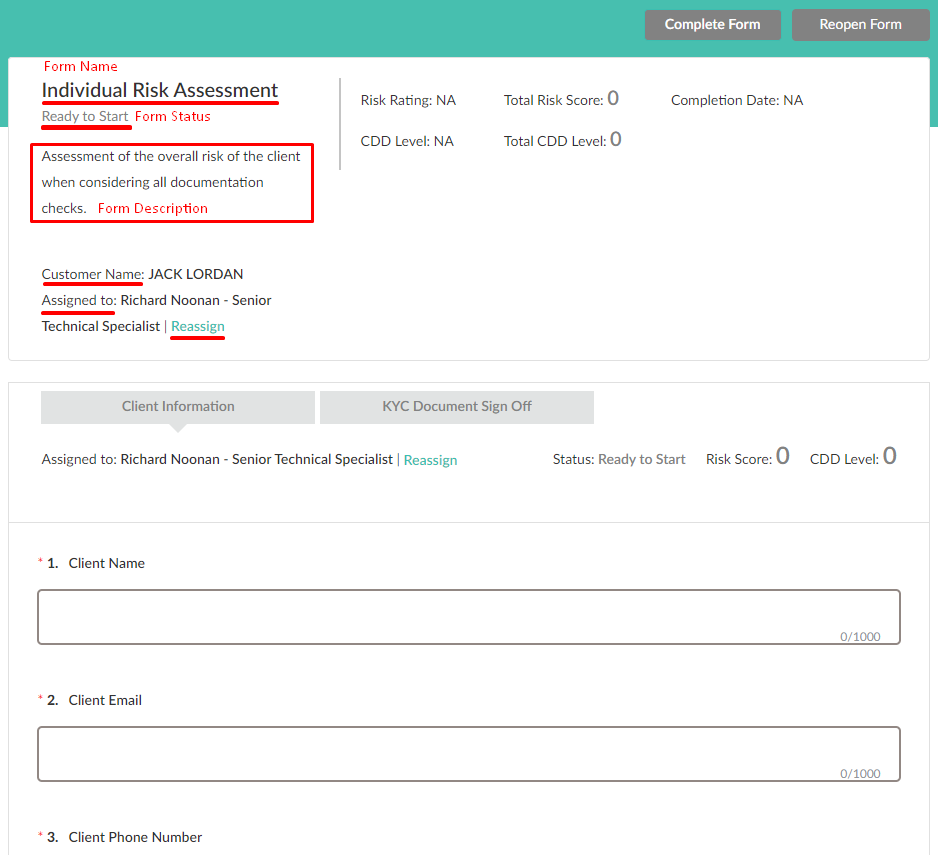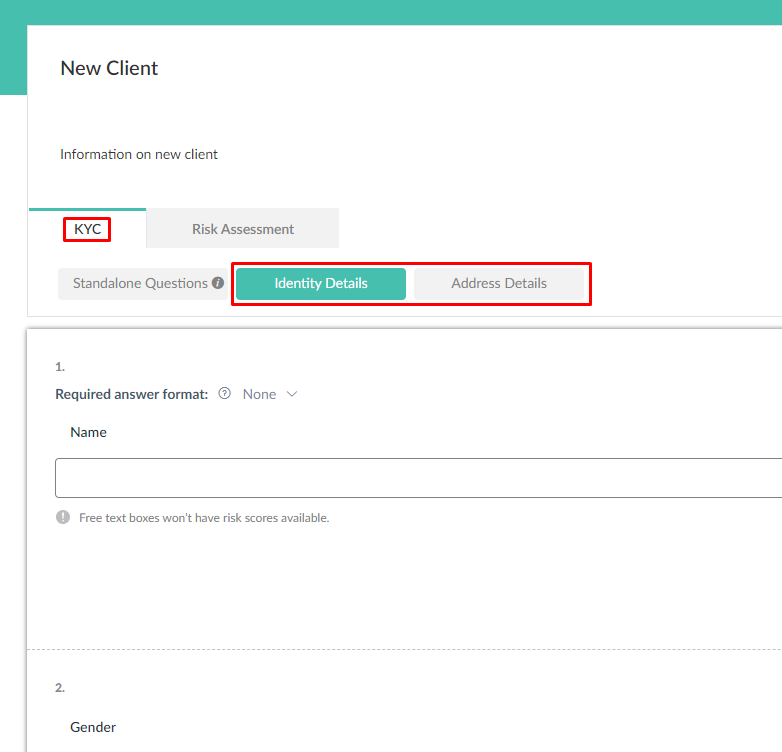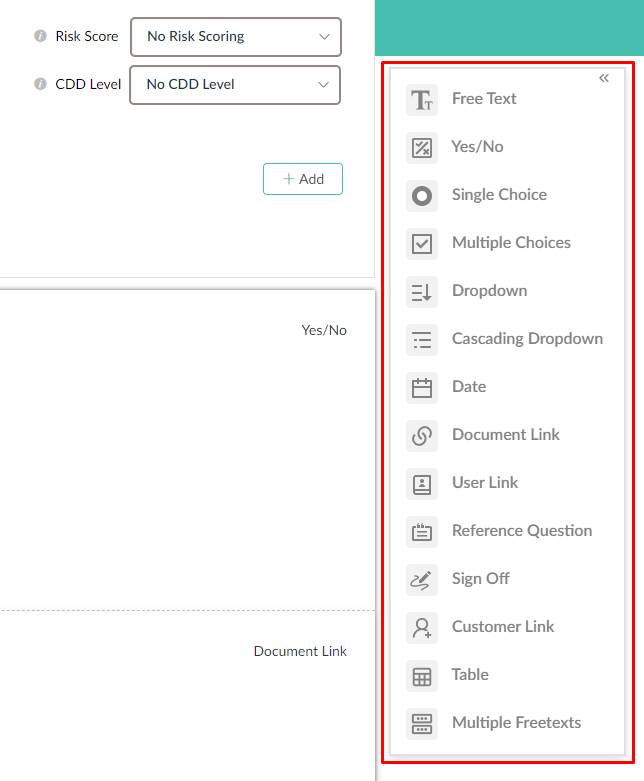In valid8Me, you have the ability to create form templates that can be utilised for completing various actions like KYC, Risk Assessments and Due Diligence when bringing on new clients.
These form templates consist of different elements and follow a hierarchical structure.
These are the elements included in the form templates:
- Form Name
- Status
- Description
- Customer/Client Name
- Assignee
- Risk Rating
- Total Risk Score
- Completion Date
- CDD (Customer Due Diligence) Level
- Total CDD Level
Here is an example form that we have designed to provide you with a clear understanding of what a typical form looks like.

The form in question is an Individual Risk Assessment form for a customer named JACK LORDAN. It is currently in the "Ready to Start" status and has been assigned to Richard Noonan for completion.
Please note that the form can be reassigned using "Reassign" option which appears just after the assignee details
Additionally, it is important to note that the forms can have different statuses, which include:
- Ready to Start
- In Progress
- Submitted
- Complete
- Reopened
The Risk Rating, Total Risk Score, Completion Date, CDD Level, and Total CDD Level will display as 0 or N/A because no data has been entered into the form and it has not yet been completed.
Here is the hierarchy of forms:
- Form
- Page - Detail, Dependency, Display Logic - Question
- Section - Detail, Display Logic - Question
In the example form mentioned earlier, the "Client Information" and "KYC Document Sign Off" pages do not include any sections. However, let me provide you with an example of a form that does have sections. Here we can see that the KYC page has two sections. The Identity Details section and the Address Details section.

Finally, there is the Questions section. To add questions, simply use the Questions Menu located on the right-hand side of the Form Builder interface.

Here are the different question types that you can choose from when creating a form:
- Free Text: Allows users to enter any text or information.
- Yes/No: Requires a simple yes or no response.
- Single Choice: Provides a list of options, and users can select only one choice.
- Multiple Choices: Offers a list of options, and users can select multiple choices.
- Dropdown: Displays a dropdown menu with predefined options for users to select.
- Cascading Dropdown: Shows a dropdown menu with options that depend on a previous selection.
- Date: Allows users to select a date from a calendar.
- Document Link: Enables users to attach documents to relevant documents.
- User Link: Allows users to link to other user profiles or accounts.
- Reference Question: Lets users reference other questions or sections within the form.
- Sign Off: Requires users to electronically sign or confirm their agreement.
- Customer Link: Allows users to link to customer profiles or accounts.
- Table: Provides a table format for users to enter data.
- Multiple Freetexts: Allows users to enter multiple free text responses.
These question types offer flexibility and customization options for creating effective and user-friendly forms.
Please see the following article on Creating a Form Template
If you have any questions on this process please feel free to reach out to our Support team at support@valid8me.com
